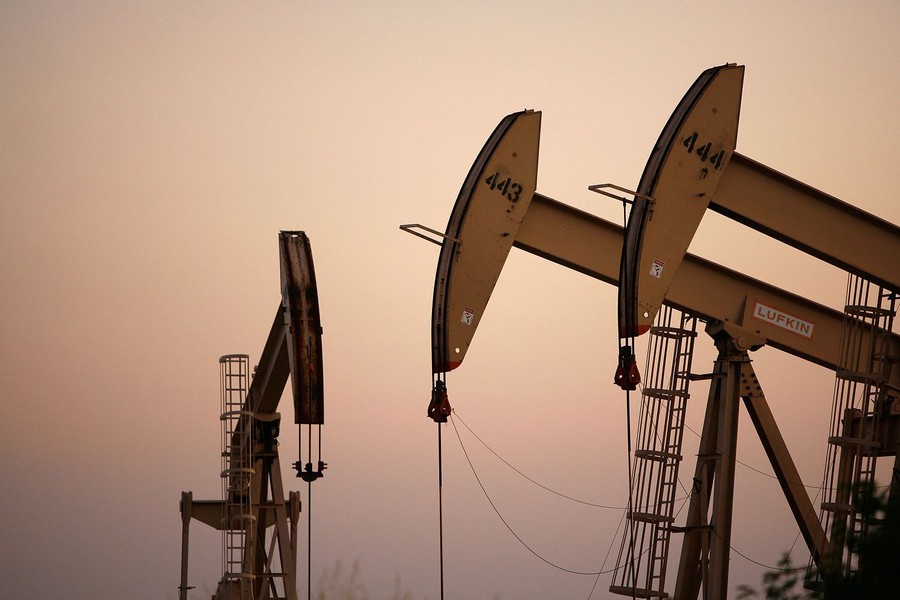Understanding Oil and Gas Prices: Why They Change So Quickly
Oil and gas are among the most crucial global commodities, fuelling economies, industries, and households. But if you’ve ever noticed the price of fuel changing from one week to the next—or even daily—you’re not alone. The volatile nature of oil and gas prices is driven by a complex mix of factors, ranging from geopolitical events to supply and demand imbalances.
In this article, we’ll explore why oil and gas prices chart change so quickly, and what businesses and consumers should know about the forces behind these shifts.
The Basics of Oil and Gas Pricing
At the core, oil and gas prices are influenced by the global supply and demand dynamic. But that’s just the beginning. Unlike many other products, energy prices are deeply sensitive to international markets, environmental conditions, policy decisions, and investor behaviour.
Key Factors That Cause Oil and Gas Prices to Change Rapidly
1. Global Supply and Demand
When global demand rises—like during a cold winter or booming economic growth—prices typically go up. Conversely, oversupply or falling demand leads to price drops.
Examples:
- Summer travel increases gasoline demand
- Industrial slowdowns reduce natural gas consumption
- New oil discoveries or production cuts change available supply
2. Geopolitical Tensions and Conflict
Oil markets are highly sensitive to instability in key producing regions. Conflicts, sanctions, or political unrest in countries like Iran, Russia, or Saudi Arabia can quickly disrupt supply and spike prices.
Examples:
- War in oil-rich regions
- Sanctions on major exporters
- Political upheaval affecting pipelines or ports
3. OPEC+ Decisions
The Organization of the Petroleum Exporting Countries (OPEC), along with allies like Russia (known as OPEC+), holds significant influence over oil production levels. When they decide to increase or cut output, it has a near-immediate effect on global prices.
4. Natural Disasters and Weather Events
Hurricanes in the Gulf of Mexico, extreme cold snaps, or heatwaves can shut down production facilities or spike usage, leading to price fluctuations.
Examples:
- Hurricanes halting offshore drilling
- Cold weather driving up heating gas demand
- Droughts impacting biofuel production
5. Market Speculation and Investor Sentiment
Oil and gas are traded on global markets, and financial speculation plays a big role. Traders often react to news, forecasts, and economic indicators, driving prices up or down even if supply or demand hasn’t yet changed.
6. Currency Exchange Rates
Since oil is priced in U.S. dollars, fluctuations in the dollar’s value can affect prices. A stronger dollar typically makes oil more expensive for other countries, potentially lowering global demand.
7. Government Policies and Environmental Regulations
Subsidies, taxes, tariffs, and carbon regulations all impact the cost of producing and distributing oil and gas. A change in policy—such as new drilling restrictions or clean energy incentives—can shift price expectations overnight.
Recent Examples of Price Fluctuations
- 2020 Pandemic Crash: Oil prices plummeted as global demand collapsed. In April 2020, U.S. crude even went negative for a brief time.
- 2022 Ukraine War: Global oil prices surged past $100/barrel following the Russian invasion, due to fears of disrupted supply.
- 2023–2024 OPEC+ Cuts: Continued production cuts helped stabilize prices around $80–$90/barrel amid mixed demand forecasts.
Why It Matters for Businesses and Consumers
Fluctuating oil and gas prices affect:
- Transportation costs (fuel for vehicles, shipping)
- Utility bills (especially in gas-reliant regions)
- Production costs in manufacturing, food, and other sectors
- Inflation and economic planning at a national level
For businesses, understanding the causes of energy price changes is key to managing operational costs, hedging risk, and forecasting budgets.
Oil and gas prices are influenced by a wide range of global factors, many of which can shift quickly and unexpectedly. From geopolitical tensions and weather events to market speculation and supply decisions, these fluctuations are part of a highly interconnected system.
By staying informed and working with energy consultants or risk managers, businesses can better prepare for sudden price changes and make smarter energy decisions.
Understanding Oil and Gas Prices: Why They Change So Quickly
Oil and gas are among the most crucial global commodities, fuelling economies, industries, and households. But if you’ve ever noticed the price of fuel changing from one week to the next—or even daily—you’re not alone. The volatile nature of oil and gas prices is driven by a complex mix of factors, ranging from geopolitical events to supply and demand imbalances.
In this article, we’ll explore why oil and gas prices change so quickly, and what businesses and consumers should know about the forces behind these shifts.
The Basics of Oil and Gas Pricing
At the core, oil and gas prices are influenced by the global supply and demand dynamic. But that’s just the beginning. Unlike many other products, energy prices are deeply sensitive to international markets, environmental conditions, policy decisions, and investor behaviour.
Key Factors That Cause Oil and Gas Prices to Change Rapidly
1. Global Supply and Demand
When global demand rises—like during a cold winter or booming economic growth—prices typically go up. Conversely, oversupply or falling demand leads to price drops.
Examples:
- Summer travel increases gasoline demand
- Industrial slowdowns reduce natural gas consumption
- New oil discoveries or production cuts change available supply
2. Geopolitical Tensions and Conflict
Oil markets are highly sensitive to instability in key producing regions. Conflicts, sanctions, or political unrest in countries like Iran, Russia, or Saudi Arabia can quickly disrupt supply and spike prices.
Examples:
- War in oil-rich regions
- Sanctions on major exporters
- Political upheaval affecting pipelines or ports
3. OPEC+ Decisions
The Organization of the Petroleum Exporting Countries (OPEC), along with allies like Russia (known as OPEC+), holds significant influence over oil production levels. When they decide to increase or cut output, it has a near-immediate effect on global prices.
4. Natural Disasters and Weather Events
Hurricanes in the Gulf of Mexico, extreme cold snaps, or heatwaves can shut down production facilities or spike usage, leading to price fluctuations.
Examples:
- Hurricanes halting offshore drilling
- Cold weather driving up heating gas demand
- Droughts impacting biofuel production
5. Market Speculation and Investor Sentiment
Oil and gas are traded on global markets, and financial speculation plays a big role. Traders often react to news, forecasts, and economic indicators, driving prices up or down even if supply or demand hasn’t yet changed.
6. Currency Exchange Rates
Since oil is priced in U.S. dollars, fluctuations in the dollar’s value can affect prices. A stronger dollar typically makes oil more expensive for other countries, potentially lowering global demand.
7. Government Policies and Environmental Regulations
Subsidies, taxes, tariffs, and carbon regulations all impact the cost of producing and distributing oil and gas. A change in policy—such as new drilling restrictions or clean energy incentives—can shift price expectations overnight.
Recent Examples of Price Fluctuations
- 2020 Pandemic Crash: Oil prices plummeted as global demand collapsed. In April 2020, U.S. crude even went negative for a brief time.
- 2022 Ukraine War: Global oil prices surged past $100/barrel following the Russian invasion, due to fears of disrupted supply.
- 2023–2024 OPEC+ Cuts: Continued production cuts helped stabilize prices around $80–$90/barrel amid mixed demand forecasts.
Why It Matters for Businesses and Consumers
Fluctuating oil and gas prices affect:
- Transportation costs (fuel for vehicles, shipping)
- Utility bills (especially in gas-reliant regions)
- Production costs in manufacturing, food, and other sectors
- Inflation and economic planning at a national level
For businesses, understanding the causes of energy price changes is key to managing operational costs, hedging risk, and forecasting budgets.
Oil and gas prices are influenced by a wide range of global factors, many of which can shift quickly and unexpectedly. From geopolitical tensions and weather events to market speculation and supply decisions, these fluctuations are part of a highly interconnected system.
By staying informed and working with energy consultants or risk managers, businesses can better prepare for sudden price changes and make smarter energy decisions.





